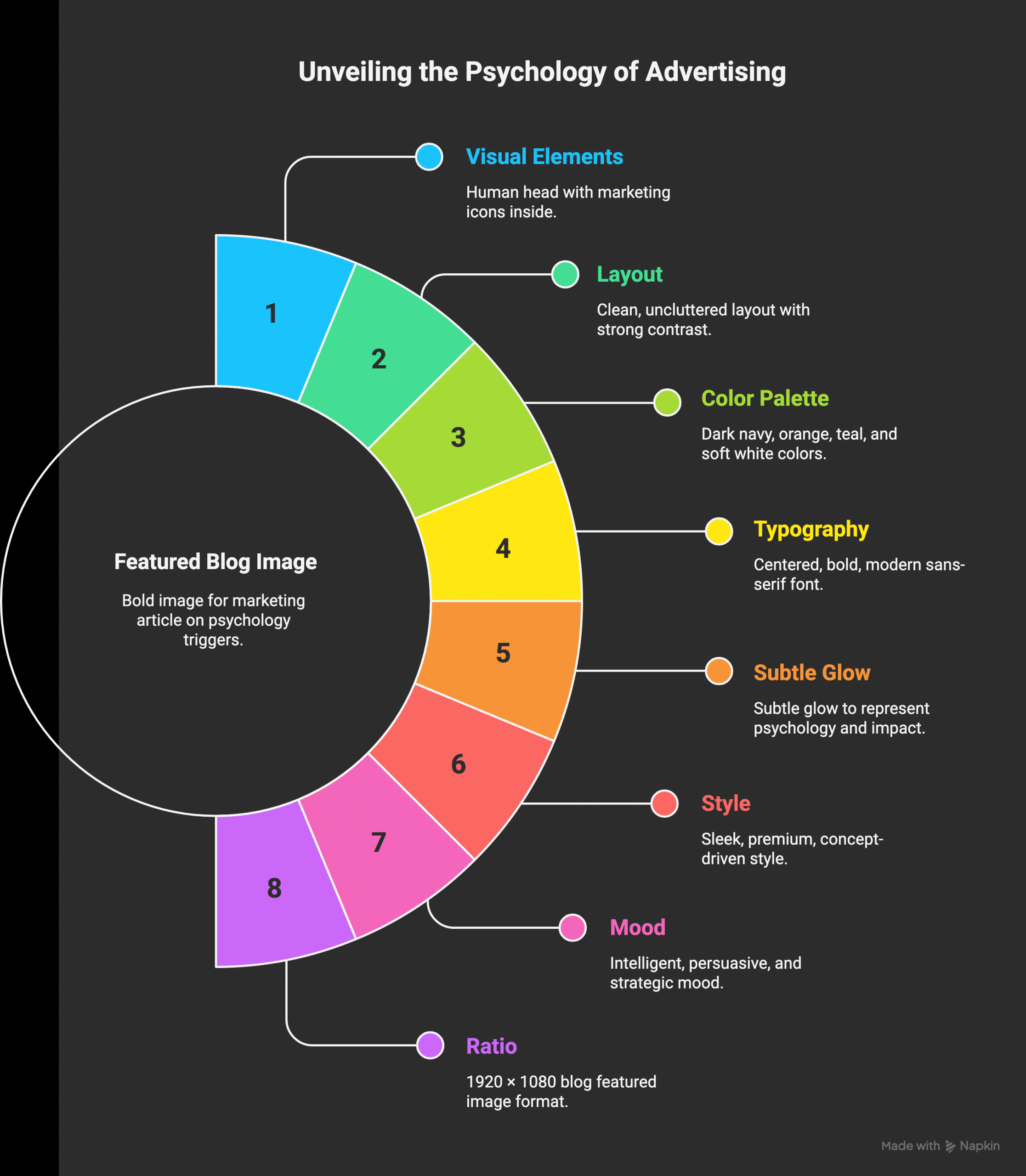Introduction
Every marketer has felt it: the moment a consumer clicks “buy” almost automatically, as if pulled by an invisible force. It’s rarely just logic—it’s psychology. According to research, up to 95 % of purchasing decisions happen subconsciously.
In this post, we’ll dive into seven powerful psychological triggers that make ads convert, and show you how to apply each one in your campaigns.
1. Social Proof
When people see others doing something, they tend to follow. Whether it’s reviews, testimonials, user-generated pictures or influencer endorsements, social proof lowers hesitation.
Example trigger: “Join 10,000 marketers who’ve boosted their ROI.”
Research support: Elevating others’ behaviour increases trust and action.
How to use it:
Include real customer ratings or case studies in your ad/landing page.
Use images/videos showing real people using the product.
Highlight numbers (“97 % of clients renewed”).
2. Scarcity & Urgency
When people believe something is limited (in time or quantity), the desire to act increases.
For example: “Only 24 hours left” or “5 spots remaining”.
Evidence: A study found that urgency and scarcity significantly increase purchase intent in e-commerce.
How to use it:
Run limited-time offers.
Show countdown timers.
Communicate if stocks are low (“Only 3 left at this price!”).
3. Reciprocity
We humans feel compelled to repay kindness. If you give value first (free guide, helpful tip, useful content), the recipient is more likely to engage or reciprocate later.
How to use it:
Offer a free checklist or mini-course before asking for a commitment.
Provide value in your ads or landing pages (e.g., “Download our 5-step primer for free”).
Follow up with a soft offer—people feel they owe something.
4. Authority
People trust authority figures or credible provenance. When you appear expert, your persuasion power increases.
Example trigger: Use expert quotes, recognised certifications, and “As seen on…” badges.
How to use it:
Feature endorsements from known industry figures.
Cite reputable research or stats in your messaging.
Use professional branding, clean design, and credentials.
5. Commitment & Consistency
Once someone takes a small action (e.g., clicking “Yes”, filling a short form), they are more likely to follow through with a larger one to remain consistent.
How to use it:
Ask low-barrier commitments (e.g., “Subscribe for free tips”).
Then offer the next step (“Book a free strategy call”).
Use phrases that evoke agreement: questions, “Do you want to…?” cause nodding.
6. Emotion & Storytelling
Facts inform—but emotions drive. Brands that connect emotionally create stronger engagement and loyalty. A study on advertising found that the unconscious emotional response predicted ad liking and the likelihood of action.
Frontiers
How to use it:
Tell a human story in your ad or blog: challenge → pivot → success.
Use visuals and tone that evoke joy, surprise, relief or belonging.
Avoid heavy jargon—use language your audience actually uses.
7. Belonging & Identity
People buy into brands when they feel the brand reflects who they are or who they aspire to be. The trigger is: “This is for people like me.”
How to use it:
Define clearly who your product/service is for (“For ambitious marketers who hate cookie-cutter ads”).
Use “we” language to include the audience.
Build community messaging (“Join our tribe of creative sellers”).
Bringing It All Together: Application Template
Here’s a mini checklist you can apply to any ad/campaign:
Does it show someone else doing it (social proof)?
Is there a reason to act now (scarcity/urgency)?
Have you given value first (reciprocity)?
Does the message come from a credible authority?
Is there a simple first step (commitment)?
Does it tell a story / evoke emotion?
Does it speak to the identity of your target audience (belonging)?
When you answer yes to all seven, you’re in strong territory for conversion.
Real-World Example (Hypothetical for AdcraftMind)
Let’s say you’re running a masterclass for marketers: “Sell More With Story & Conversion Psychology”.
Social proof: “Over 1,200 marketers trained”
Scarcity: “Only 50 seats. Registration closes in 48 hrs”
Reciprocity: Offer a free PDF “5-minute ad script template” as a bonus.
Authority: “Led by AdcraftMind’s founder—10+ years of campaign experience”
Commitment: “Claim your free spot” (low barrier) → “Book your seat” (higher commitment)
Emotion/Storytelling: “Imagine your ad not just seen, but remembered and shared…”
Belonging: “Join our community of creative marketers who refuse bland ads”
Ethical Considerations
With great power comes great responsibility. These triggers are powerful—but must be used ethically. Avoid manipulation that misleads or preys on vulnerability. Authenticity, transparency and aligning your triggers with real value are key.
kadence.com
Conclusion
Psychology isn’t magic—but it shines a spotlight on why people act. By understanding and ethically applying these seven triggers—social proof, scarcity, reciprocity, authority, commitment, emotion, and belonging—you’ll create ads that don’t just speak—they sell.
Use the checklist above, apply it to your next campaign, and track the difference.
